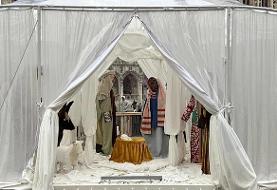How did Montesquieu's "Persian Letters" Become 18th Century's Popular Literary Work?
Published in 1721 by Charles de Secondat, baron de Montesquieu, "Persian Letters" (French: Lettres persanes) is a novel that recounted the experiences of two fictional Persian noblemen, Usbek and Rica, who spend several years in France under Louis XIV and the Regency. Persian Letters had at once such prodigious sales that booksellers tried everything to procure sequels.
Critics of Montesquieu believe his portrayal of Persian and Islamic culture based on his fictitious Persian characters is inaccurate and biased, but Montesquieu defends the authenticity of his letters and denies having written and invented them.
Others believe in "Persian Letters" Montesquieu plays a subtle game of mirrors to use the distant Persia to indirectly lambast the absurdities, norms, mores and abuses of contemporary French aristocracy, high society and the recently deceased Louis XIV. He often uses the Persian characters as a mirror to depict the French society as a society of hypocritical appearances where human relations are based on interest, seduction, domination, deception. This is why Montesquieu had the "Persian Letters" published anonymously in Amsterdam because in the 18th century, all works had to obtain royal privilege in order to be published.

The story's plot:
In 1711 Usbek leaves his seraglio in Isfahan to make the long journey to France, accompanied by his young friend Rica. He leaves behind five wives in the care of a number of black eunuchs, one of whom is the head or first eunuch. During the trip and their long stay in Paris (1712 to 1720), they comment, in letters exchanged with friends and mullahs, on numerous aspects of Western, Christian society, particularly French politics and manners, including a biting satire of the System of John Law.
Montesquieu's sources of information about Iran include Jean Chardin’s Voyages en Perse and and to a lesser degree the Voyages of Jean-Baptiste Tavernier and Paul Rycaut.
According to Goodreads:
"This richly evocative novel-in-letters tells the story of two Persian noblemen who have left their country - the modern Iran - to journey to Europe in search of wisdom. As they travel, they write home to wives and eunuchs in the harem and to friends in France and elsewhere. Their colourful observations on the culture differences between West and East culture conjure up Eastern sensuality, repression and cruelty in contrast to the freer, more civilized West - but here also unworthy nobles and bishops, frivolous women of fashion and conceited people of all kinds are satirized. Storytellers as well as letter-writers, Montesquieu's Usbek and Rica are disrespectful and witty, but also serious moralists. Persian Letters was a succès de scandale in Paris society, and encapsulates the libertarian, critical spirit of the early eighteenth century."
Related to History:
- In Pictures: Norooz Tourists Pack Isfahan's Naghsh Jahan Square
- Video: Persian New Year, Nowruz or Norooz, Simply Explained
- Accounting Tablet Found in Iran's Ancient Burn City from 5000 Years Ago
- The Nomadic Journey of a Bakhtiari Family According to the Smithsonian Magazine
- Iran in Pictures: 1921
- Arch of Ctesiphon, Ancient Persian Architectural Masterpiece Collapses near Baghdad
- Video: Compare Words in Ancient Iranian (Avestan) and Indo-European Languages
- A Historical Blunder: Trump Claims 1775 Revolutionary Army 'took over airports'!
- Persian Physician's Book Was Translated, Taught and Cherished in Ireland Centuries Ago
- In Pictures: Tehran Museums, A Treasure Trove of Iranian Culture and History
- Iran Now A Powerhouse in Volleyball: U19 Team Tops FIVB Global Ranking for the First Time Ever
- Archaeologists Find Evidence Noah’s Ark Landed in Northern Iran
- 2500 Year Old Persian Palace Excavated in Northern Turkey
- Film Shows Isfahan and Tehran some 61 years Ago
- Legal victory for Iranians and World Heritage: US Judge Orders Return of Ancient Achaemenid Relief to Iran





















































